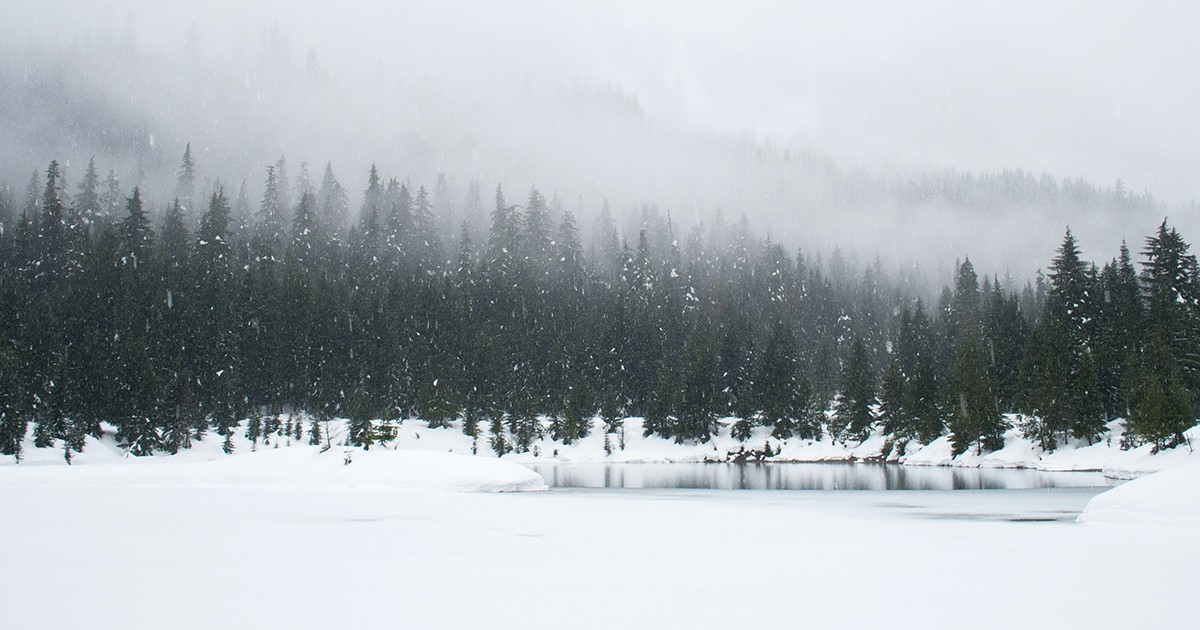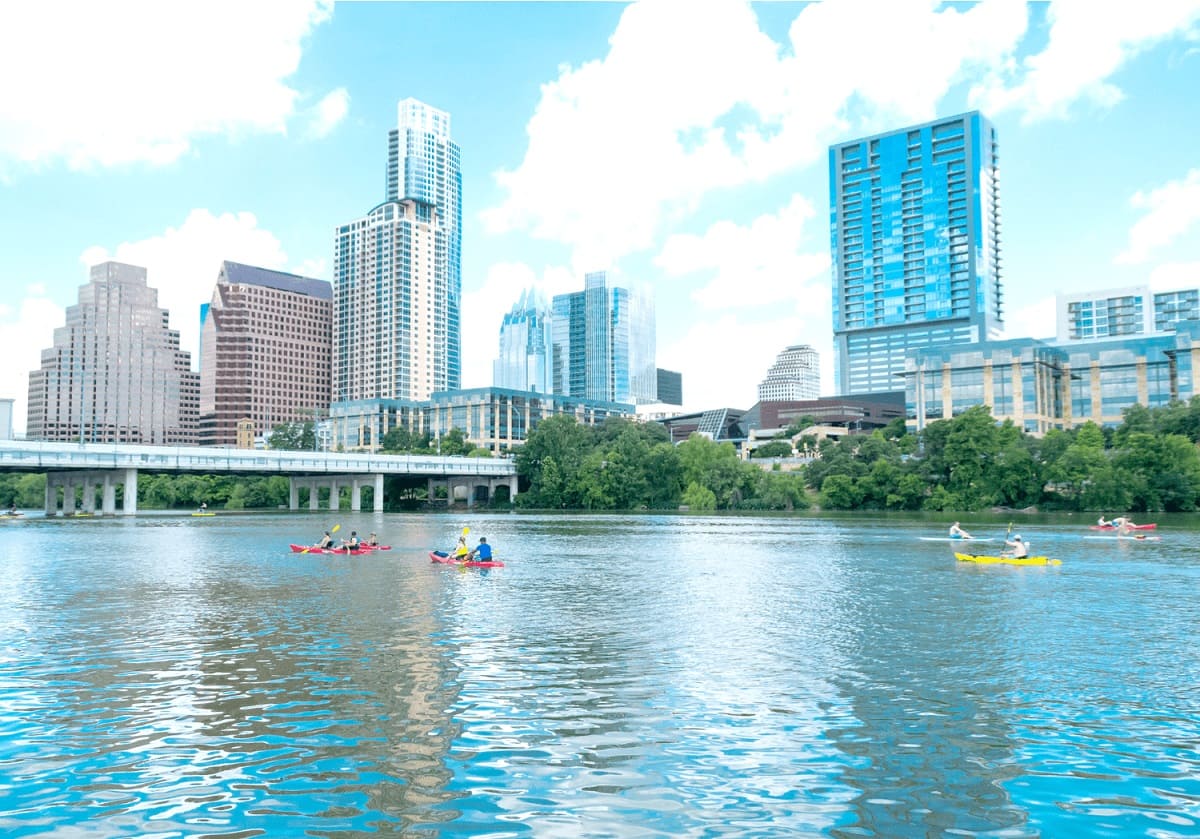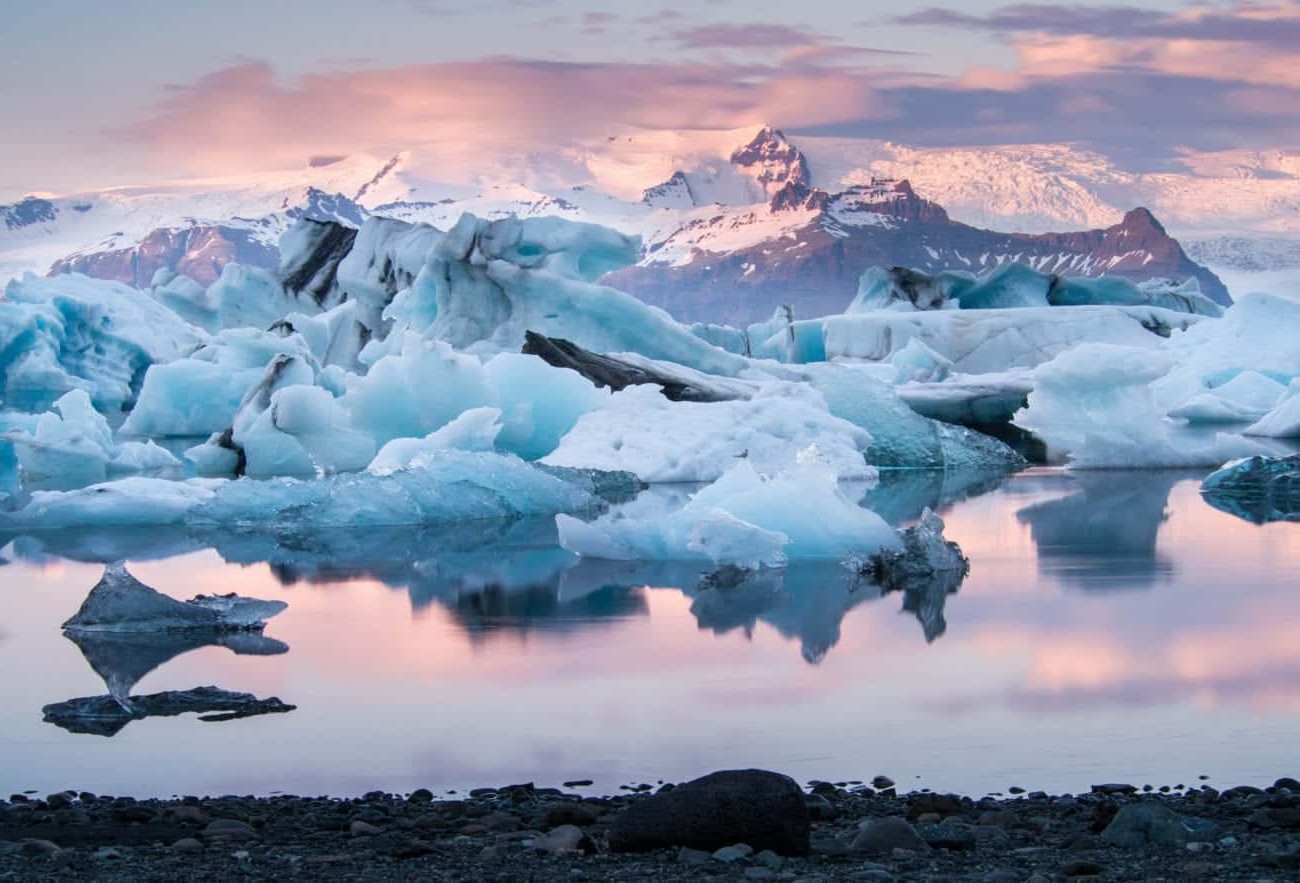Home>Weather and Climate>An Extended Period Of Below-Average Temperatures


Weather and Climate
An Extended Period Of Below-Average Temperatures
Published: April 16, 2024
Explore the impact of an extended period of below-average temperatures on weather and climate. Learn about the potential consequences and implications.
(Many of the links in this article redirect to a specific reviewed product. Your purchase of these products through affiliate links helps to generate commission for Temperatures.com, at no extra cost. Learn more)
Table of Contents
- Causes of the Prolonged Cold Weather
- Impact on Agriculture and Crop Production
- Effects on Energy Consumption and Heating Costs
- Health Risks Associated with Extended Cold Temperatures
- Strategies for Coping with Below-Average Temperatures
- Historical Examples of Extended Cold Periods
- Predictions and Forecasts for Future Below-Average Temperatures
Causes of the Prolonged Cold Weather
Prolonged cold weather can be attributed to various natural and atmospheric factors that disrupt the typical patterns of temperature and weather conditions. These causes can range from large-scale climate phenomena to localized weather patterns, all of which contribute to extended periods of below-average temperatures.
-
Arctic Oscillation: The Arctic Oscillation, a climate pattern characterized by the pressure differences between the polar and mid-latitude regions, plays a significant role in influencing the distribution of cold air masses. When the Arctic Oscillation is in a negative phase, cold air from the Arctic region can penetrate further south, leading to prolonged cold spells in mid-latitude areas.
-
Jet Stream Disturbances: The behavior of the jet stream, a high-altitude, fast-flowing air current, can also contribute to prolonged cold weather. When the jet stream meanders and becomes wavy, it can allow frigid air from the polar regions to push southward, resulting in extended periods of cold temperatures in affected areas.
-
La Niña Events: The occurrence of La Niña, a climate phenomenon characterized by cooler-than-average sea surface temperatures in the equatorial Pacific Ocean, can influence global weather patterns. During La Niña events, certain regions may experience below-average temperatures, contributing to prolonged cold weather conditions.
-
Sudden Stratospheric Warming: Sudden stratospheric warming events, which involve the rapid warming of the stratosphere at high altitudes, can disrupt the polar vortex. This can lead to the displacement of cold air from the polar regions, causing it to move southward and resulting in prolonged periods of cold weather in affected areas.
-
Persistent High-Pressure Systems: The presence of persistent high-pressure systems in certain regions can lead to stagnant weather patterns, trapping cold air and preventing warmer air from moving in. This can result in prolonged cold weather conditions as the cold air remains entrenched in the affected areas.
Understanding the complex interplay of these factors is crucial in comprehending the causes of prolonged cold weather. By monitoring these atmospheric phenomena and their potential impacts, meteorologists and climate scientists can provide valuable insights into the likelihood and duration of extended periods of below-average temperatures.
This comprehensive understanding of the causes of prolonged cold weather enables communities, governments, and industries to prepare and adapt to the challenges posed by such weather conditions, ultimately enhancing resilience and mitigating potential adverse effects.
Read more: Average Temperature In Atlanta
Impact on Agriculture and Crop Production
Prolonged periods of below-average temperatures can exert a profound impact on agriculture and crop production, posing significant challenges to farmers and the overall food supply chain. The repercussions of extended cold weather reverberate throughout the agricultural sector, influencing various aspects of crop cultivation, livestock management, and overall food production.
Crop Damage and Yield Reduction
One of the primary consequences of prolonged cold weather is the potential for crop damage and yield reduction. Frost and freezing temperatures can harm sensitive crops, leading to diminished yields or even complete crop loss. Certain crops, such as fruits and vegetables, are particularly susceptible to cold weather, as exposure to freezing temperatures can cause cellular damage, rendering the produce unsuitable for consumption or commercial use. Additionally, the germination and growth of newly planted crops may be impeded by the cold, further impacting overall yield and harvest expectations.
Delayed Planting and Growth
Extended periods of below-average temperatures can also result in delayed planting and growth cycles for various crops. Farmers may face challenges in initiating the planting process due to unfavorable soil conditions and low temperatures, leading to disruptions in the typical agricultural calendar. As a result, the overall growth and maturation of crops may be delayed, potentially affecting the timing of harvests and market availability of agricultural products.
Increased Production Costs
The impact of prolonged cold weather extends beyond the immediate effects on crops and agricultural activities. Farmers and agricultural producers may incur additional expenses to mitigate the adverse effects of cold temperatures. Measures such as implementing frost protection systems, utilizing heating equipment in greenhouses, and employing alternative cultivation methods to safeguard crops against the cold can contribute to increased production costs. These additional expenditures can strain the financial resources of agricultural operations, particularly for small-scale farmers and producers.
Disruption of Supply Chains
The influence of extended cold weather on agriculture extends to the broader supply chain dynamics. Reduced crop yields and production delays can disrupt the availability and distribution of agricultural products, affecting market supply and consumer access to fresh produce. Furthermore, the impact on livestock, such as reduced forage availability and increased feed requirements due to prolonged cold weather, can further strain the agricultural supply chain, potentially leading to market fluctuations and price volatility.
Adaptation and Resilience
In response to the challenges posed by prolonged cold weather, farmers and agricultural stakeholders employ various adaptation strategies to mitigate the impact on crop production. These may include the selection of cold-tolerant crop varieties, the implementation of protective measures such as row covers and mulching, and the utilization of advanced forecasting tools to anticipate and prepare for cold weather events. Additionally, investments in agricultural infrastructure and technology, such as greenhouse facilities and climate-controlled growing environments, can enhance resilience against the effects of prolonged cold temperatures.
Collaborative Efforts and Support Systems
The agricultural community relies on collaborative efforts and support systems to navigate the challenges presented by extended cold weather. Information sharing, research initiatives, and access to financial assistance and insurance programs play a crucial role in bolstering the resilience of farmers and agricultural enterprises. Furthermore, the dissemination of best practices and knowledge exchange within the agricultural sector contributes to the development of adaptive strategies and the promotion of sustainable agricultural practices in the face of prolonged cold weather conditions.
In essence, the impact of prolonged cold weather on agriculture and crop production underscores the intricate interplay between environmental factors, agricultural practices, and the resilience of food systems. By recognizing and addressing the multifaceted challenges posed by extended periods of below-average temperatures, the agricultural sector can strive to enhance its capacity to adapt, innovate, and sustainably manage the impact of cold weather on crop cultivation and food production.
Effects on Energy Consumption and Heating Costs
Prolonged periods of below-average temperatures have a substantial impact on energy consumption and heating costs, influencing both residential and commercial energy usage. As temperatures plummet and cold weather persists, the demand for heating systems escalates, leading to heightened energy consumption and associated financial implications.
Read more: Croatia Weather Guide – Average Temperatures
Increased Energy Demand
The onset of extended cold weather prompts a surge in the demand for heating, as individuals and households rely on heating systems to maintain comfortable indoor temperatures. This heightened demand extends to various energy sources, including electricity, natural gas, heating oil, and other forms of heating fuel. As a result, energy consumption rises significantly, placing strain on energy infrastructure and supply networks.
Escalating Heating Costs
The amplified energy consumption during prolonged cold weather translates into escalating heating costs for consumers. The increased usage of heating systems leads to higher energy bills, impacting household budgets and potentially creating financial burdens for individuals and families. Moreover, businesses and commercial entities also experience a surge in heating expenses, as they endeavor to sustain suitable indoor environments for employees, customers, and operational activities.
Strain on Energy Resources
Extended periods of below-average temperatures place a strain on energy resources and distribution networks. Energy providers and utilities face the challenge of meeting heightened demand while ensuring the reliability and stability of energy supply. The need to deliver sufficient heating fuel and electricity to meet the surging demand necessitates meticulous management of energy resources and infrastructure, particularly during extreme cold weather events.
Energy Efficiency Measures
In response to the impact of prolonged cold weather on energy consumption and heating costs, individuals and organizations often implement energy efficiency measures to mitigate the financial and environmental implications. These measures may include enhancing insulation in buildings, optimizing heating system performance, and adopting energy-saving practices to minimize overall energy usage. By improving energy efficiency, consumers can mitigate the impact of increased heating costs while reducing their environmental footprint.
Read more: Puerto Rico’s Average Temperature Guide
Economic and Social Implications
The economic and social implications of heightened energy consumption and heating costs during prolonged cold weather are multifaceted. Individuals and households may experience financial strain due to elevated energy bills, potentially affecting discretionary spending and household finances. Additionally, vulnerable populations, such as low-income households, may face heightened energy insecurity and challenges in affording adequate heating during extended cold periods, underscoring the social equity dimensions of energy affordability.
Collaborative Solutions
Addressing the impact of prolonged cold weather on energy consumption and heating costs necessitates collaborative solutions involving energy providers, policymakers, and consumers. Initiatives aimed at promoting energy conservation, enhancing energy affordability programs, and investing in resilient energy infrastructure can contribute to mitigating the effects of extended cold weather on energy consumption and heating costs. Furthermore, public awareness campaigns and educational efforts can empower individuals and communities to adopt energy-efficient practices and make informed decisions regarding heating and energy usage.
In essence, the effects of prolonged cold weather on energy consumption and heating costs underscore the interconnectedness of environmental conditions, energy demand, and socioeconomic considerations. By recognizing the challenges posed by heightened energy consumption during extended cold periods and implementing proactive measures to enhance energy efficiency and affordability, stakeholders can work towards mitigating the impact of prolonged cold weather on energy consumption and heating costs.
Health Risks Associated with Extended Cold Temperatures
Extended periods of below-average temperatures pose significant health risks, impacting individuals' well-being and necessitating heightened awareness of cold-related health concerns. The prolonged exposure to cold weather conditions can give rise to a range of adverse health effects, encompassing both immediate risks and long-term implications.
Immediate Health Hazards
Prolonged exposure to cold temperatures can lead to immediate health hazards, including hypothermia and frostbite. Hypothermia occurs when the body loses heat faster than it can produce, resulting in a dangerously low internal body temperature. This condition can manifest through symptoms such as shivering, confusion, slurred speech, and drowsiness, and if left untreated, it can lead to life-threatening complications. Frostbite, on the other hand, occurs when skin and underlying tissues freeze due to prolonged exposure to cold conditions, resulting in tissue damage and potential long-term consequences.
Read more: Average Monthly Temperatures In Europe
Respiratory Challenges
Extended cold weather can exacerbate respiratory challenges, particularly for individuals with pre-existing conditions such as asthma and chronic obstructive pulmonary disease (COPD). Cold air can trigger airway constriction and inflammation, leading to breathing difficulties and heightened respiratory distress. Additionally, indoor air quality may be compromised during prolonged cold periods, as inadequate ventilation and increased reliance on heating systems can contribute to indoor air pollution, further impacting respiratory health.
Cardiovascular Strain
The cardiovascular system can also face strain during extended cold weather, as the body works to maintain internal warmth and circulation. Cold temperatures can lead to vasoconstriction, causing blood vessels to narrow and potentially elevating blood pressure. For individuals with cardiovascular conditions, such as hypertension and heart disease, the added physiological stress posed by prolonged cold weather can increase the risk of cardiovascular events and complications.
Mental Health Impacts
The psychological impact of extended cold weather should not be overlooked, as the prolonged absence of sunlight and outdoor activities can contribute to feelings of isolation, seasonal affective disorder (SAD), and overall mental well-being. Reduced exposure to natural light and outdoor environments during cold periods can affect mood regulation and mental health, highlighting the interconnectedness of environmental factors and psychological well-being.
Vulnerable Populations
Vulnerable populations, including the elderly, young children, individuals experiencing homelessness, and those with limited access to adequate shelter, are particularly susceptible to the health risks associated with extended cold temperatures. The need for targeted interventions and support systems to safeguard the health and well-being of these populations becomes paramount during prolonged cold weather events.
Read more: Denver Average Monthly Temperatures
Mitigation and Preparedness
Mitigating the health risks associated with extended cold temperatures requires proactive measures, including the provision of adequate shelter, access to warm clothing, and the dissemination of cold weather advisories and safety guidelines. Public health initiatives aimed at raising awareness of cold-related health hazards, promoting proper cold weather attire, and facilitating outreach to vulnerable individuals play a crucial role in mitigating the impact of prolonged cold weather on public health.
In essence, the health risks associated with extended cold temperatures underscore the importance of comprehensive public health strategies, community resilience, and individual preparedness to safeguard against the adverse health effects of prolonged exposure to cold weather conditions. By recognizing the multifaceted nature of cold-related health risks and implementing targeted interventions, stakeholders can work towards enhancing the health and well-being of individuals during extended cold periods.
Strategies for Coping with Below-Average Temperatures
Coping with below-average temperatures necessitates a multifaceted approach that encompasses proactive measures at individual, community, and institutional levels. By adopting strategic coping strategies, individuals and communities can enhance their resilience and mitigate the impact of prolonged cold weather. These strategies encompass various aspects, including preparedness, resource management, and community support systems.
Preparedness and Planning
Preparedness serves as a cornerstone for coping with below-average temperatures. Individuals and households can proactively prepare for cold weather events by ensuring the availability of essential supplies, such as emergency heating sources, blankets, and non-perishable food items. Developing a cold weather emergency plan, which includes communication protocols and designated meeting points, can enhance readiness in the event of severe cold spells or disruptions in essential services.
Energy Conservation and Efficiency
Efficient management of energy resources is pivotal in coping with prolonged cold weather. Implementing energy-saving practices, such as optimizing heating system settings, enhancing insulation in buildings, and utilizing programmable thermostats, can contribute to reducing energy consumption and mitigating the financial impact of heightened heating costs. Additionally, leveraging renewable energy sources, such as solar heating technologies, can offer sustainable alternatives for meeting heating needs during extended cold periods.
Read more: Average August Temperatures In Rio
Community Outreach and Support
Community-based initiatives play a vital role in fostering resilience during below-average temperatures. Establishing community outreach programs, neighborhood support networks, and cold weather shelters can provide essential assistance to vulnerable individuals and families. Collaborative efforts to check on elderly neighbors, distribute cold weather safety information, and organize community warming centers contribute to creating a supportive environment for coping with prolonged cold weather.
Health and Safety Measures
Prioritizing health and safety measures is crucial for coping with extended cold periods. Individuals should be equipped with cold weather attire, including insulated clothing and appropriate footwear, to minimize the risk of cold-related health issues. Additionally, staying informed about cold weather advisories, recognizing the signs of hypothermia and frostbite, and seeking medical attention when necessary are essential components of safeguarding personal health and well-being during below-average temperatures.
Infrastructure Resilience
Investments in resilient infrastructure and public facilities contribute to effective coping with prolonged cold weather. Ensuring the maintenance and functionality of heating systems, road clearance and de-icing operations, and the availability of emergency services are integral aspects of enhancing community resilience. Furthermore, the implementation of urban planning strategies that prioritize cold weather resilience, such as designing sheltered public spaces and improving accessibility during winter conditions, can bolster the capacity to cope with below-average temperatures.
In essence, the implementation of comprehensive coping strategies for below-average temperatures encompasses proactive preparedness, energy efficiency, community support, health and safety measures, and infrastructure resilience. By integrating these strategic approaches, individuals and communities can navigate the challenges posed by prolonged cold weather, ultimately fostering resilience and minimizing the impact of extended cold periods.
Historical Examples of Extended Cold Periods
Throughout history, the world has witnessed several notable instances of extended cold periods, each leaving a lasting imprint on societies and ecosystems. These historical examples serve as compelling illustrations of the profound impact of prolonged cold weather on various facets of human life and the natural environment.
One such historical example is the Little Ice Age, a period of cooling that endured for several centuries, from approximately the 14th to the 19th century. This extended cold period was characterized by a series of cold spells and climatic anomalies, leading to significant alterations in weather patterns across the Northern Hemisphere. The Little Ice Age exerted far-reaching effects, influencing agricultural productivity, human migration patterns, and cultural adaptations. Crop failures, famines, and societal upheavals were among the consequences of the prolonged cold weather during this era, underscoring the profound societal and economic repercussions of extended cold periods.
Another notable historical instance of extended cold weather is the harsh winter of 1709, often referred to as the Great Frost. This severe cold spell gripped Europe, causing widespread hardship and disruption. Rivers froze, crops failed, and livestock perished, resulting in dire consequences for communities reliant on agriculture and trade. The Great Frost of 1709 stands as a testament to the acute impact of prolonged cold weather on societal resilience and the vulnerability of agrarian economies to extreme climatic events.
Furthermore, the winter of 1816, known as the "Year Without a Summer," represents a compelling historical example of the repercussions of extended cold periods. Following the eruption of Mount Tambora in 1815, the release of volcanic ash and aerosols into the atmosphere led to global cooling, resulting in unseasonably cold temperatures and agricultural failures. The climatic anomalies of 1816 disrupted growing seasons, leading to crop losses and food shortages, highlighting the far-reaching consequences of prolonged cold weather on food security and societal stability.
These historical examples of extended cold periods serve as poignant reminders of the intricate interplay between climatic conditions and human societies. They underscore the resilience and adaptability of communities in the face of prolonged cold weather, while also highlighting the vulnerabilities and challenges posed by extreme climatic events. By examining these historical instances, we gain valuable insights into the enduring impact of extended cold periods and the imperative of proactive adaptation and preparedness in the face of future climatic uncertainties.
Read more: Average January Temperatures In Barcelona
Predictions and Forecasts for Future Below-Average Temperatures
As advancements in climate science and meteorological research continue to expand, the ability to predict and forecast future below-average temperatures has become increasingly refined. Climate models and observational data provide valuable insights into the potential trends and patterns of extended cold periods, offering a glimpse into the future implications of below-average temperatures.
Projections indicate that certain regions may experience heightened variability in temperature patterns, leading to an increased frequency of below-average temperature events. Climate models suggest that factors such as shifting atmospheric circulation patterns, oceanic oscillations, and the influence of polar dynamics may contribute to the amplification of cold weather episodes in specific geographical areas. These forecasts underscore the importance of understanding the regional nuances of climate dynamics and the potential for localized impacts of prolonged cold weather.
Furthermore, the influence of broader climate phenomena, such as the ongoing changes in global climate patterns, underscores the interconnected nature of temperature dynamics. While overall warming trends are evident at a global scale, the potential for localized cooling and extended cold periods remains a focal point of scientific inquiry. The interplay of various climate drivers, including greenhouse gas concentrations, solar activity, and natural climate oscillations, contributes to the complexity of predicting future below-average temperatures.
In addition to climate modeling, advancements in seasonal forecasting and long-range weather prediction techniques offer valuable tools for anticipating the likelihood of extended cold periods. These forecasting methodologies leverage a combination of historical data, statistical analyses, and dynamic modeling to provide insights into the potential occurrence and duration of below-average temperature events. By integrating these predictive capabilities, meteorologists and climate scientists can offer early warnings and tailored advisories to support preparedness and resilience efforts in the face of future cold weather challenges.
The integration of predictive analytics and climate projections into decision-making processes is essential for enhancing adaptive capacity and risk management strategies. By leveraging the insights gleaned from predictions and forecasts for future below-average temperatures, stakeholders across various sectors, including agriculture, energy, public health, and infrastructure planning, can proactively prepare for potential cold weather impacts. This proactive approach encompasses measures such as enhancing cold weather resilience in infrastructure, optimizing energy resource management, and implementing adaptive agricultural practices tailored to potential temperature fluctuations.
Ultimately, the predictions and forecasts for future below-average temperatures serve as valuable tools for informed decision-making and strategic planning. By embracing the insights provided by climate projections and leveraging the advancements in forecasting capabilities, communities, governments, and industries can enhance their capacity to adapt to the challenges posed by prolonged cold weather, ultimately fostering resilience and sustainability in the face of future climatic uncertainties.








